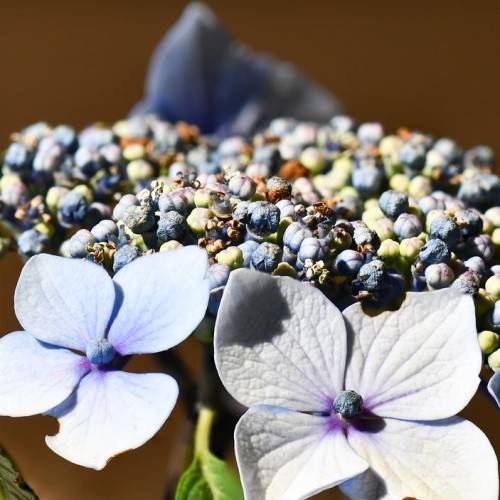
bigleaf hydrangea
Hydrangea macrophylla 'Izu-no-hana'
Cycle:
Perennial
Watering:
Average
Hardiness Zone:
6 - 9
Flowers:
Flowers In Summer
Sun:
Deep shade, Filtered shade, Part sun/part shade
Soil:
Acidic, Alkaline, Well-drained
Fruits:
Fruits Ready In Summer
Leaf:
Yes
Growth Rate:
High
Maintenance:
Moderate
Care Level:
Medium
watering
Water bigleaf hydrangea (Hydrangea macrophylla 'Izu-no-hana') plants deeply once a week to ensure they receive an inch of water each week. Water the plants at the base of the plant to reduce evaporation and keep foliage dry to help protect against fungus and other diseases. In hot, dry weather, water every other day. If the soil does not freely drain, water less, as overly wet soil can damage the roots. Make sure the soil is slightly moist but not soggy, as it can lead to disease. In winter when plant growth slows, it is safe to reduce watering frequency significantly, but still check the soil moisture level a few times per month.
sunlight
Bigleaf hydrangeas require a minimum of 6 hours of full sunlight per day for optimal flowering. Morning or early afternoon sunlight is best as this species can become scorched and damaged if exposed to harsh intense sun in the late afternoon. In humid climates, more shade and morning sun is beneficial. Varieties planted in too much shade will produce sparse blooms, due to limited flowering potential.
pruning
Bigleaf hydrangea (Hydrangea macrophylla 'Izu-no-hana') should be pruned in late winter or early spring, before new growth appears. Pruning will result in larger and more abundant flowers, better overall shape, and removal of dead or damaged branches. The amount of pruning will depend on the desired shape and size of the plant. Generally, you can cut up to 1/3 of the older stems back to the ground, and selectively remove any dead or weak-looking stems. It is also beneficial to thin out the interior branches to bring more light and air into the center of the plant. Another pruning method is to cut the stems down to the first pair of healthy buds. This will result in the later lateral blooms. By removing up to 2-thirds of the stems at a time, you can keep the size and shape of the hydrangea in check over time. However, it is important to be careful not to over prune in 1 season, so take caution. With any pruning, it is important to sharpen your pruners before use and disinfect between cuts to minimize the spread of disease.
